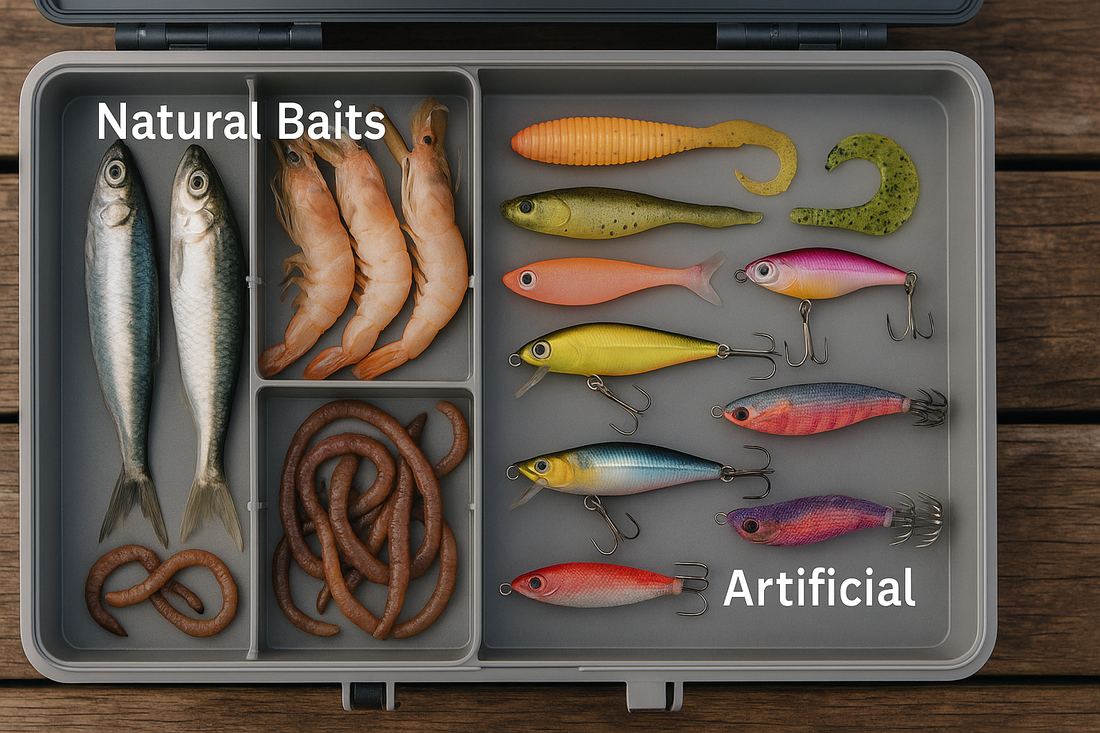
Natural Baits vs Artificial
Share
🎣 Natural Baits vs Artificial
When it comes to fishing, every angler has their go-to — some swear by fresh bait, others never leave home without a soft plastic or jig. But is one really better than the other?
Let’s break down the pros, cons, and best uses of natural baits vs artificial lures — so you can choose what works best for your next session.
🪱 Natural Baits – Tried, True & Scented
Natural baits like pilchards, prawns, worms, squid, and mussels have fed Aussie fishos for decades — and for good reason.
Pros:
– Real scent and taste = strong bite triggers
– Easy to find at tackle shops or collect yourself
– Great for burley trails and passive rigs
– Perfect for crabs, yabbies, river fish, and jetty fishing
Best for:
– Garfish, mullet, bream, flathead, crabs, yabbies, and bottom feeders
– Still water or light current setups
– Float fishing or basic drop rigs
🎣 Artificial Lures – Flashy, Durable & Reactive
Lures like soft plastics, vibes, squid jigs, and hard bodies bring action, control, and repeat use. They’re all about presentation and movement.
Pros:
– No mess, no bait refills
– Ideal for casting and active fishing
– Great for squid, snapper, salmon, and pelagics
– Can trigger aggressive strikes even when fish aren’t feeding
Best for:
– Squid, salmon, snapper, and whiting on the chew
– Kayak and boat fishing
– Fishing on the move or in clear water
🧴 Can You Use Both?
Absolutely. Some of the most effective anglers combine both — for example:
– Tipping a jig with a bit of squid
– Dabbing Tassie Salmon Fish Oil Mix™ onto soft plastics for extra scent hold
– Running a burley pot with oil while casting lures nearby
You don’t need to choose sides — just choose what suits the conditions.
🎯 Wrap-Up
There’s no right or wrong — only what works best for your style, your location, and the fish you’re chasing.
Natural bait offers unbeatable scent and realism.
Artificial lures offer control, motion, and durability.
Used together, they’re even better.
